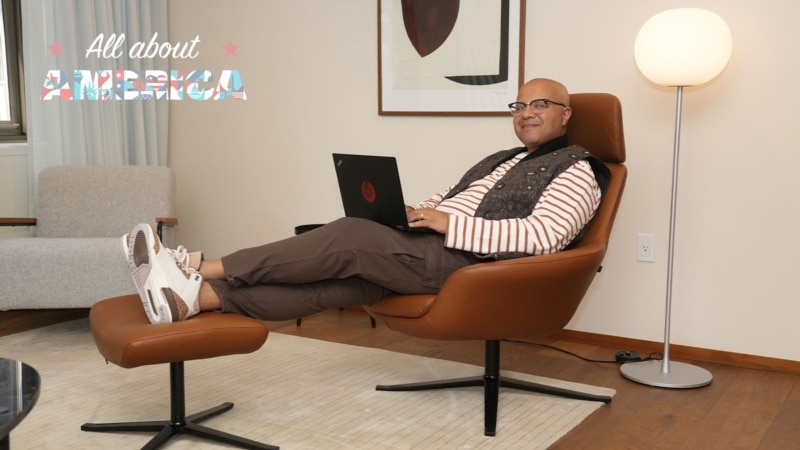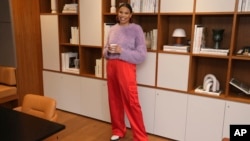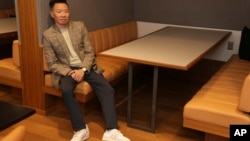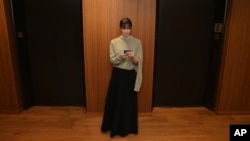This website uses cookies so that we can provide you with the best user experience possible. Cookie information is stored in your browser and performs functions such as recognising you when you return to our website and helping our team to understand which sections of the website you find most interesting and useful.

All About America explores American culture, politics, trends, history, ideals and places of interest.
When Chicago-based dressmaker and designer Kristin Mariani commutes to work, she notices a change in how people dress for the office post-pandemic.
“People are dressing more comfortably,” says Mariani, an adjunct associate professor at the School of the Art Institute of Chicago. “I rarely see a person in a suit and tie. I often will see jeans with maybe a jacket and an open shirt often.”
Many Americans spent the COVID-19 pandemic working from home in comfortable leisurewear like sweatpants. Meanwhile, workers who still had to report to work in person also opted for a more relaxed look.
“When we went remote and we still had to move forward with our day-to-day operations, the casual office attire became the mainstream in-office dress,” says Hillary Stone, a professor in the school of fashion at Kent State University.
That trend, Stone says, has continued after the pandemic. Clothing companies pivoted to address the needs of a workforce that has grown accustomed to dressing comfortably while they work. One way to do that is to make traditional office pieces out of material with more give.
“The unconstructed suit jacket is really in right now, and the wide-leg pants,” Stone says. “They're taking traditional conservative designs, and they're changing out the fabrics that we’re so used to seeing. … It creates a softer appearance. It creates a more casual appearance. It's not as conservative. It's not as stiff.”
The pandemic also made people think more about sustainable fashion, especially since many didn’t shop as much during the shutdown. And supply chain issues prompted companies to examine their processes.
“Companies, designers, merchants, they're looking differently at how to create, develop, produce and the delivery system of product,” says Stone. “And I think that's where we see the difference. Sustainability is everything. Circular economy is everything today, because we need to think smarter about what we're using and what we're manufacturing and how to use it again.”
After the pandemic, many people transitioned to hybrid schedules, working part of the week from home. A recent report finds that what is considered appropriate office wear has evolved, giving increased importance to individual style and comfort.
"The pandemic made companies realize that workers felt their best when they were able to wear outfits that reflected their personal style,” Diana Tsui, a stylist and creative consultant, said in the report. “Post-pandemic, we all want to have a little fun with our looks, and hybrid working allows for creativity and flexibility.”
And nowhere is that more apparent than when it comes to what men wear to the office.
While 79% of people surveyed said they dress differently as a result of their more flexible work schedule, 85% of men reported a shift in their work attire.
“Men's fashion is exploding,” Stone says. “What men want now, they want alternatives. And they want something that's very creative, and they want something that's clever and fun, and they want stylish.”
And while clothing companies are focusing on providing relaxed office wear, there are signals that easy-comfort times might be coming to an end.
“It went into a casual dress code, and it's moving slightly back most recently,” Stone says. “It is moving slightly back to — I don't want to say a more conservative, aesthetic and appearance — but what it's doing is becoming more formal. So, you're seeing many dresses, midi length, you're seeing longer skirts, you're seeing the slacks.”
Mariani, who teaches fashion design to college students, says COVID-19 has permanently relaxed expectations around office attire.
“There's going to still be some people who really love wearing suits, and they're going to wear a suit. And it's going to be OK if you show up in a pair of khakis and a button-down shirt and just throw a jacket on when you need to,” Mariani says. “I think both of those are going to be recognized as valid ways of dressing. I think these rigid rules are not going to apply anymore.”



 Africana55 Radio
Africana55 Radio 



